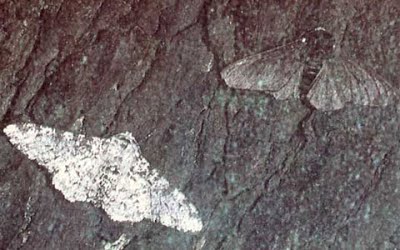The allele frequency in a population’s gene pool can change as a result of selection. The effectors of selection can be varied, yet the outcome is similar: advantageous or preferred alleles and the traits associated with them increase in frequency, while detrimental or disfavoured alleles and the traits associated with them decrease in frequency.
Here is an all-time classic example. The most frequent initial moth colour in a population landing on tree trunks was dark, to match that of the tree trunks. Few moths could get away with being light-coloured. Once the tree trunks were painted white, the former moths became very apparent to predators, and so the light-coloured moths evaded predation much better and survived to reproduce. Essentially, the tables had turned!
This resulted in the allele for light colour to spread and become the most frequent compared to that for dark colour. The latter sharply dropped in frequency and became the minority.


This is an example of directional selection. It tends towards an extreme, either the light-coloured or the dark-coloured, depending on…
